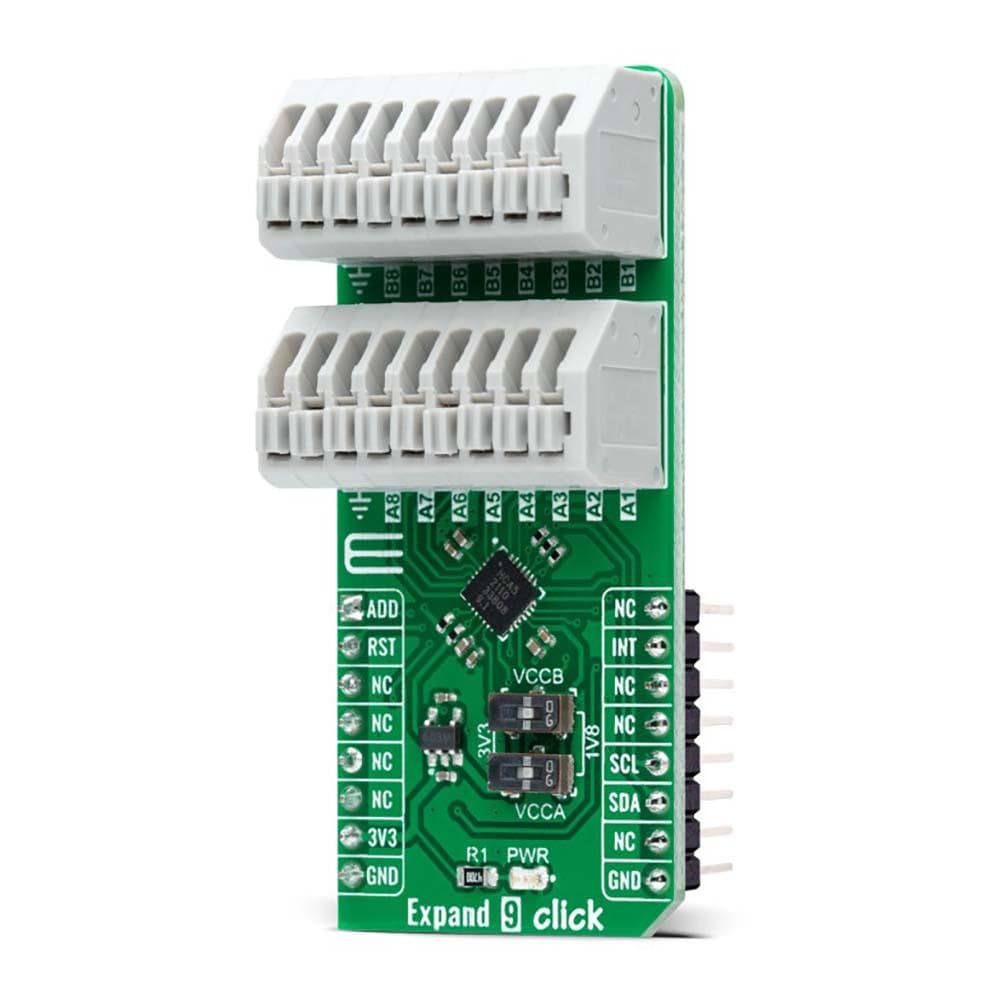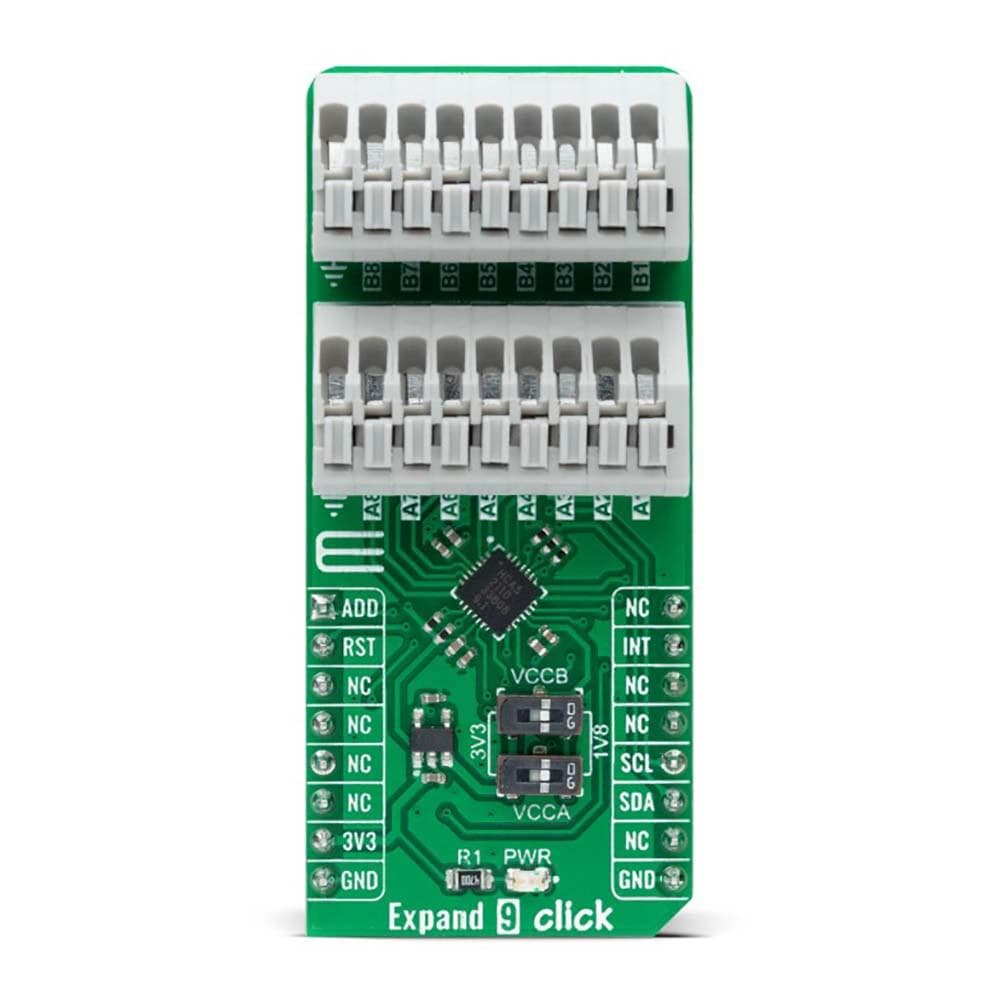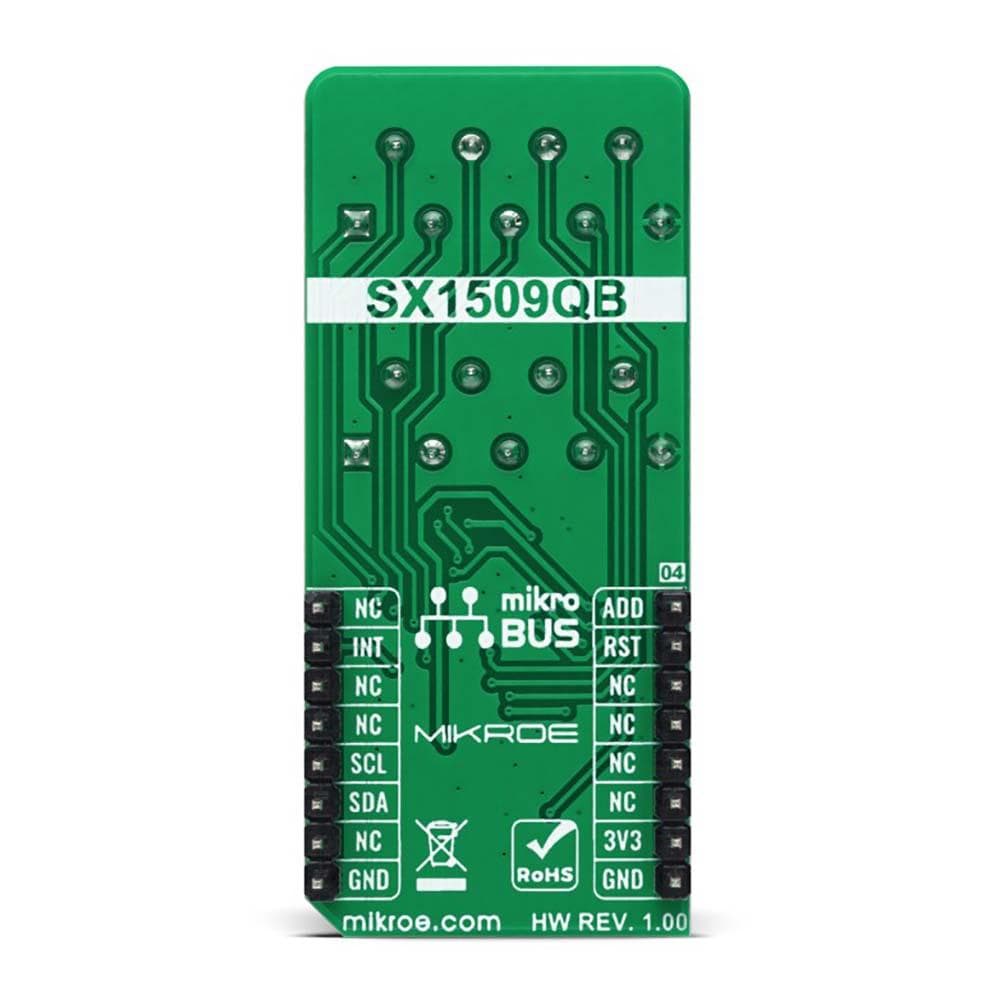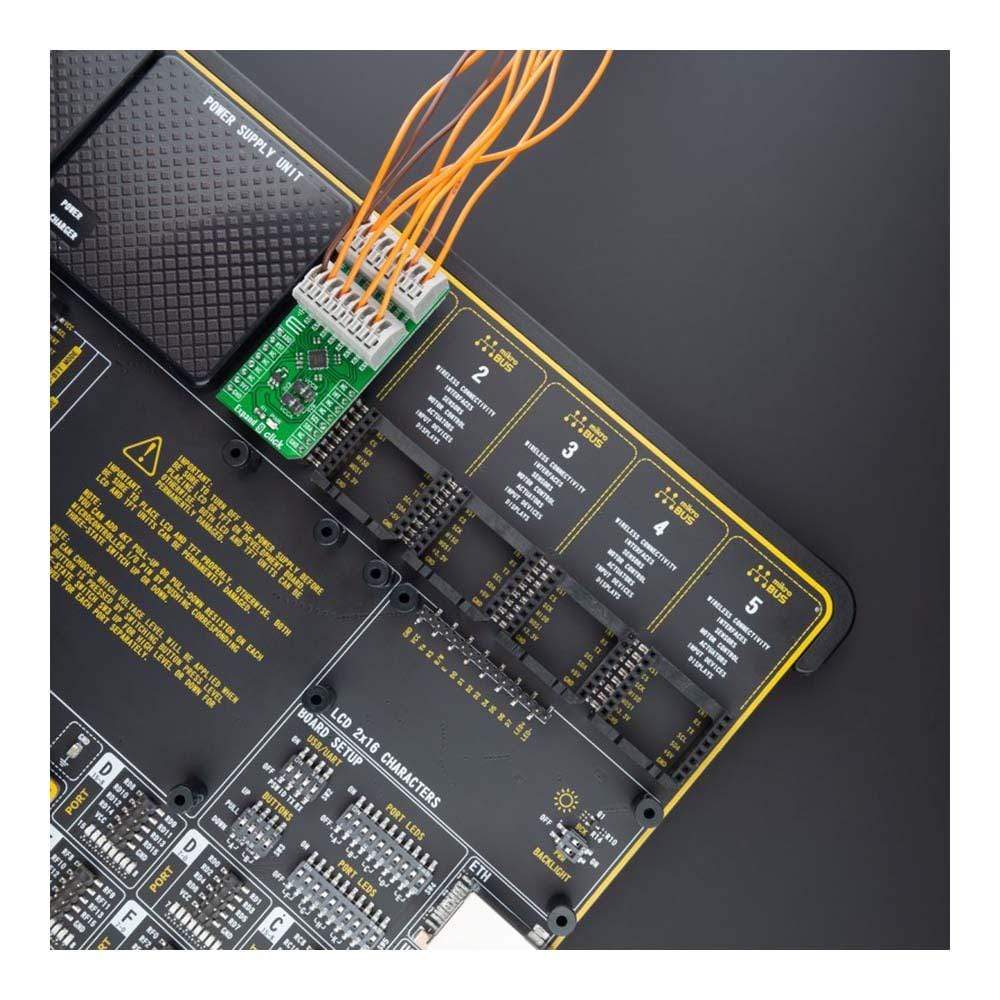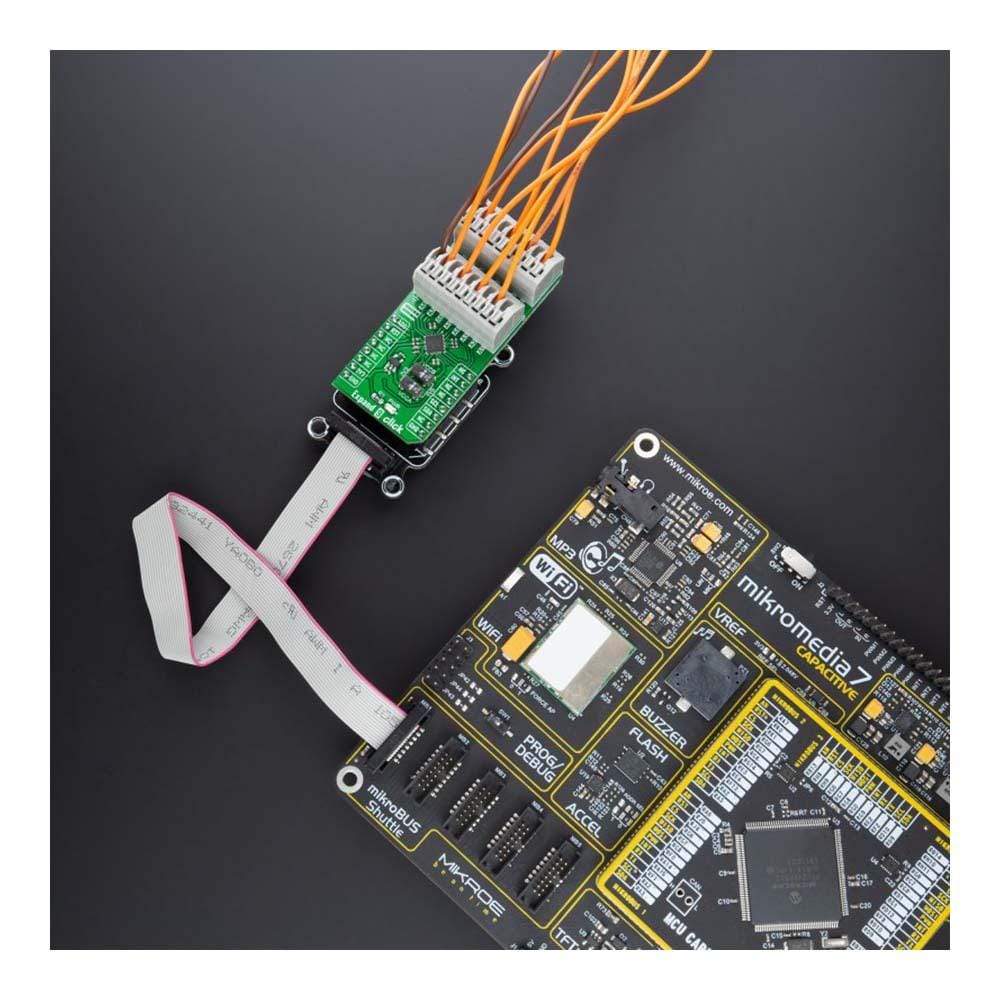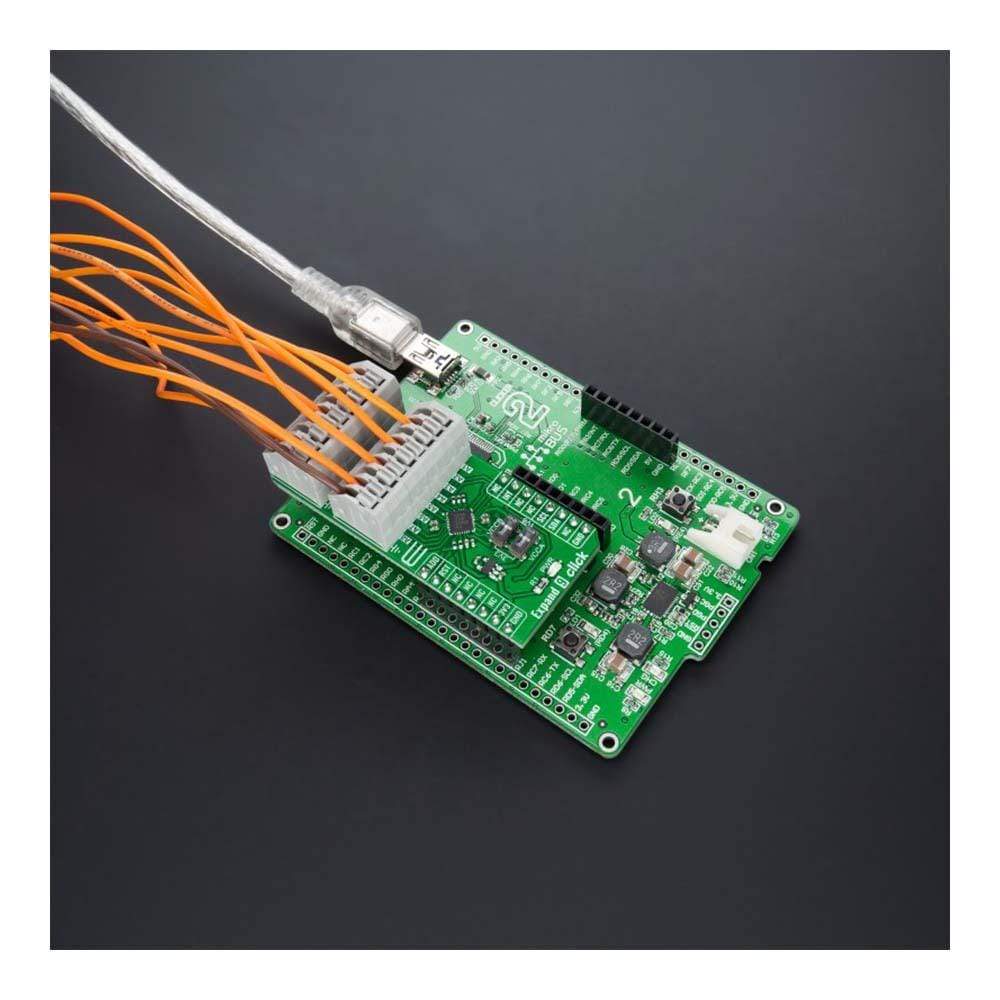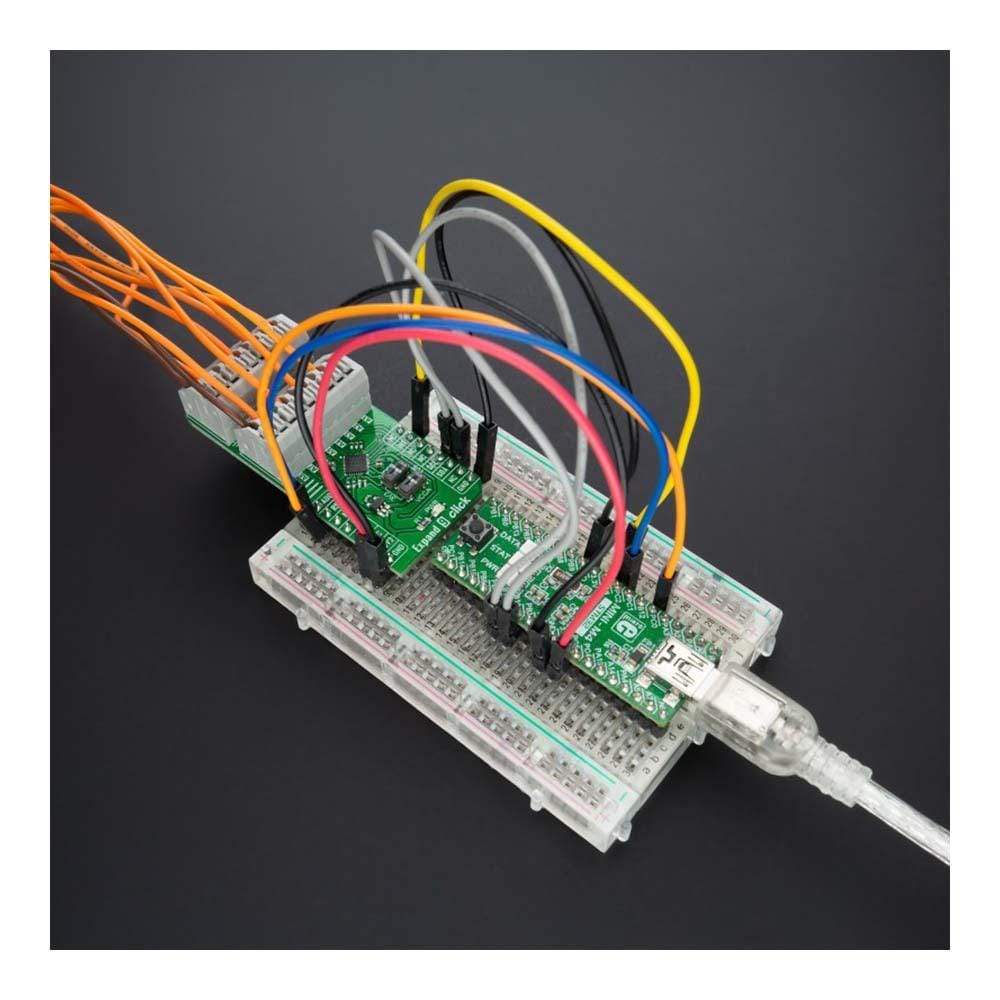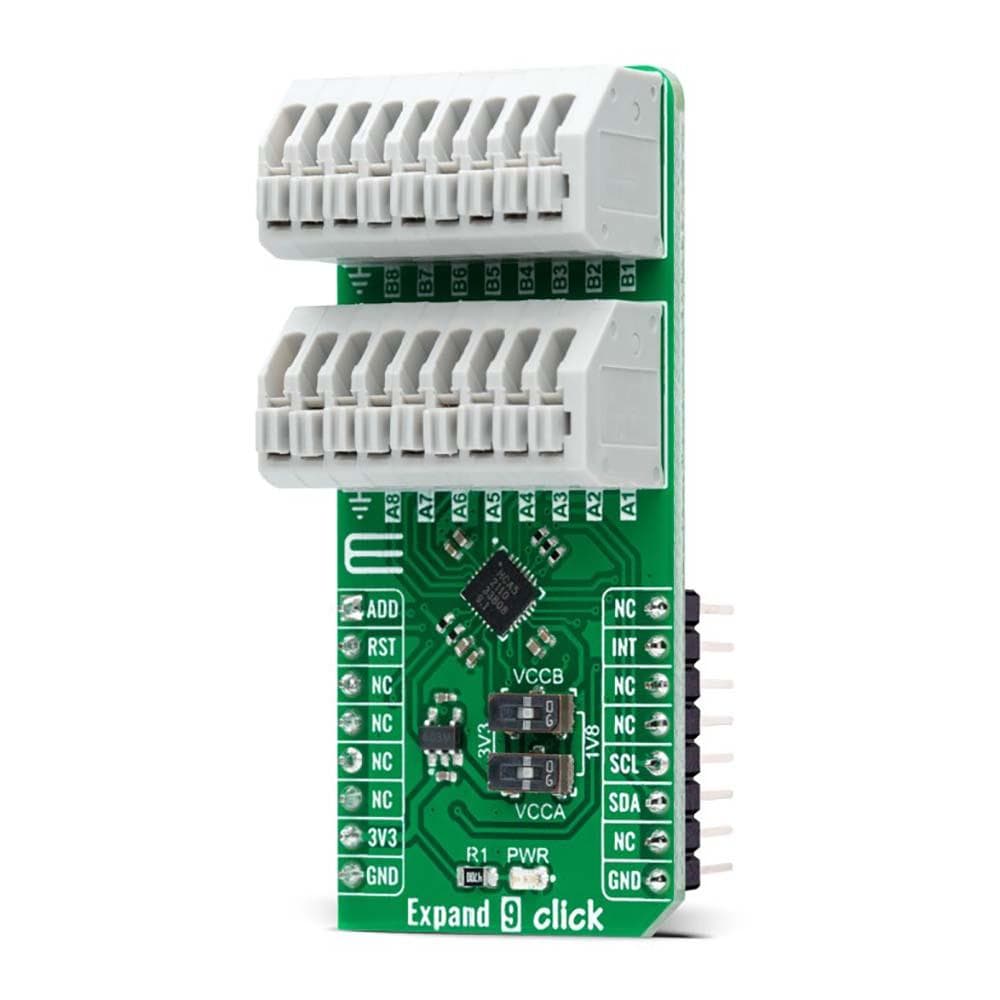
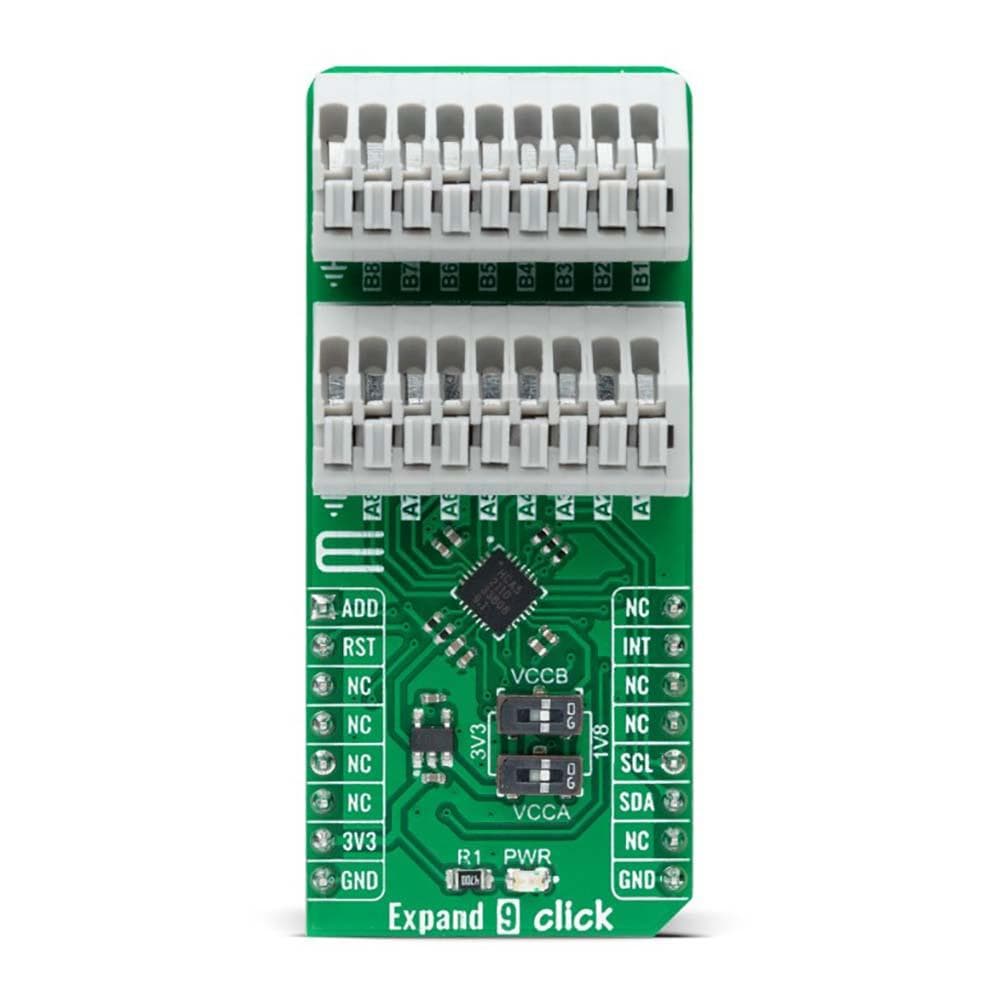
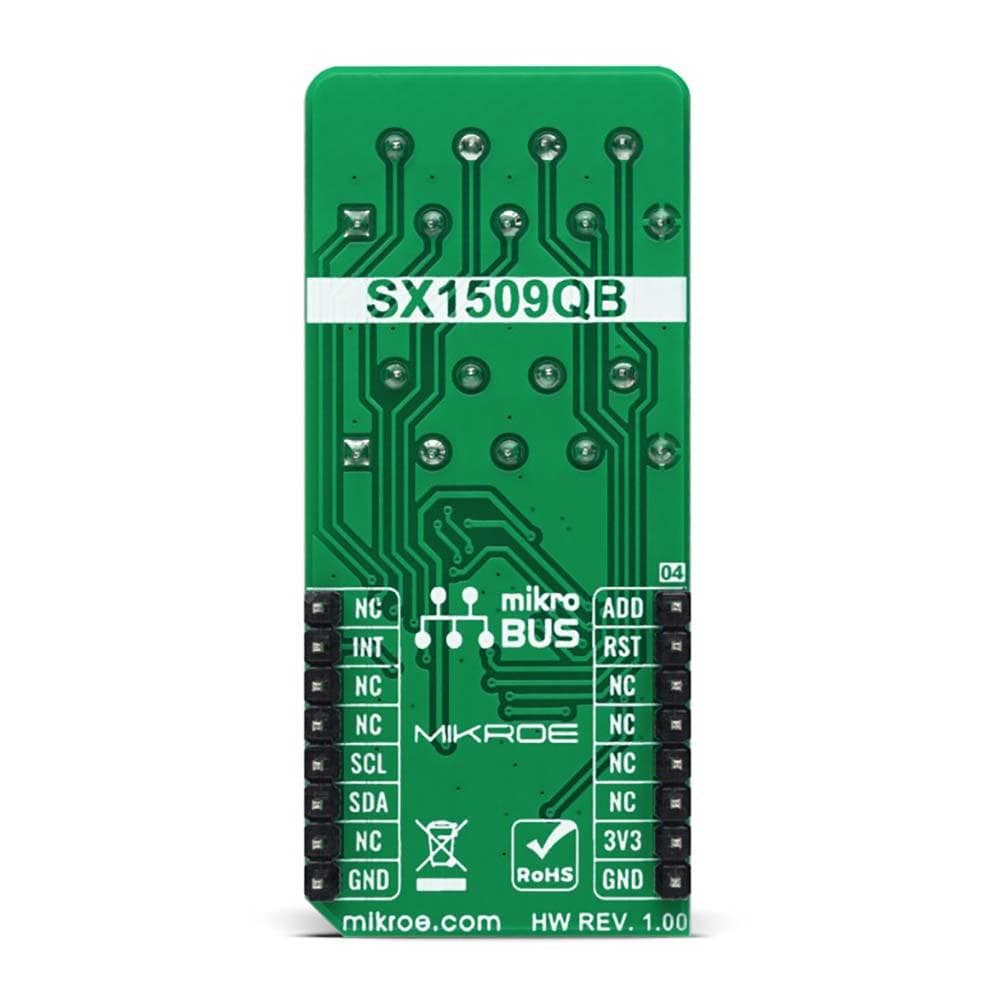

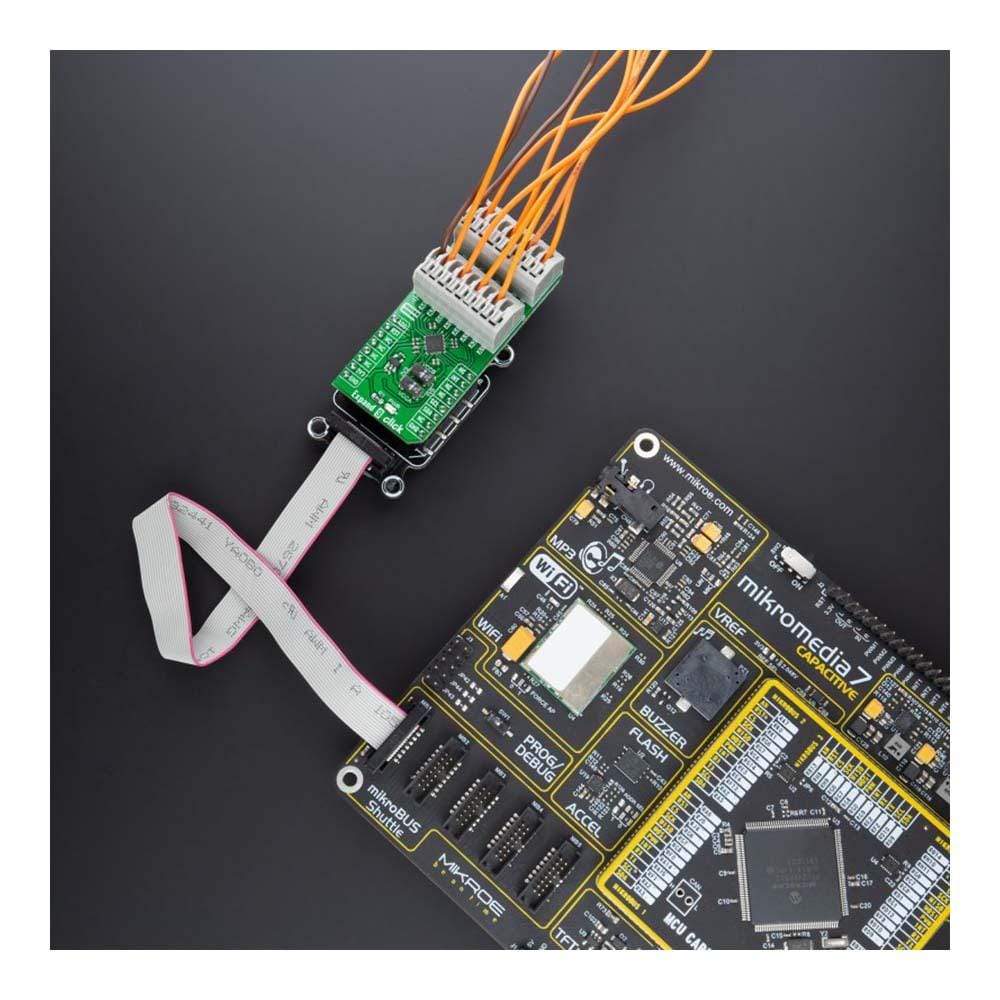
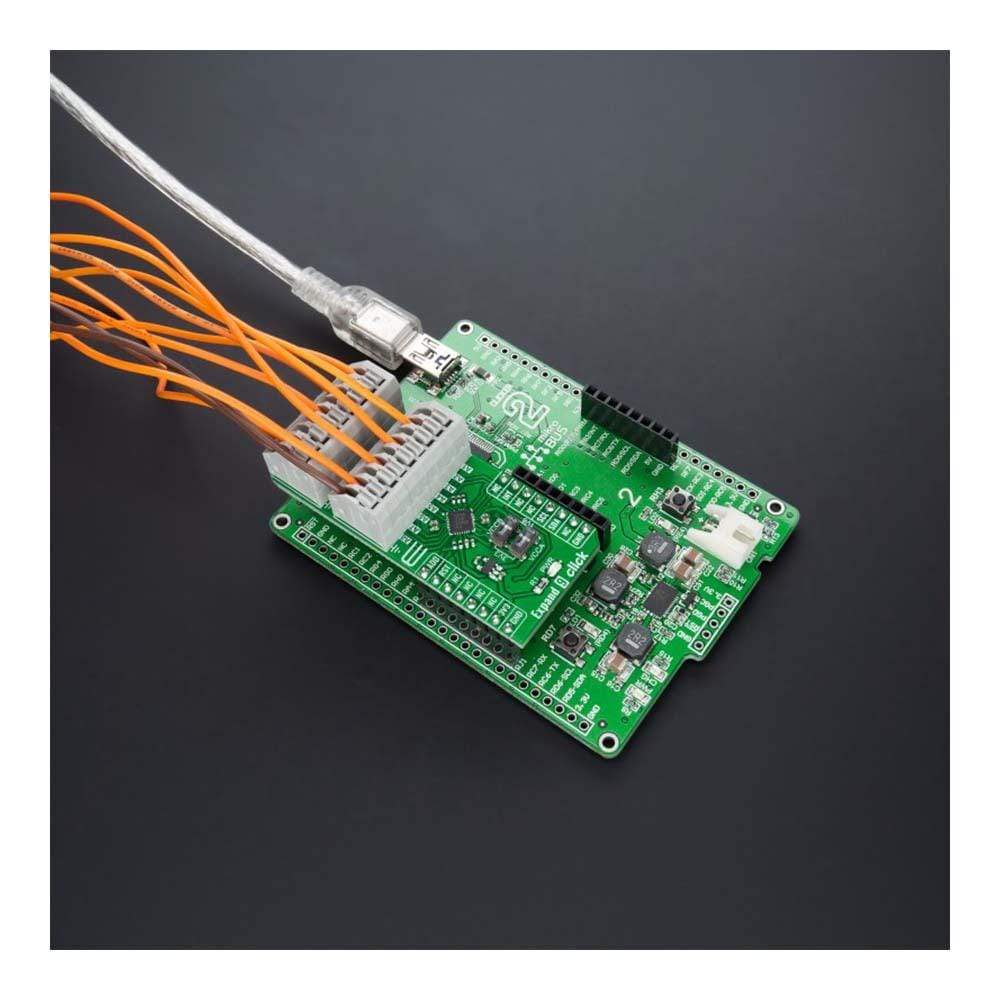
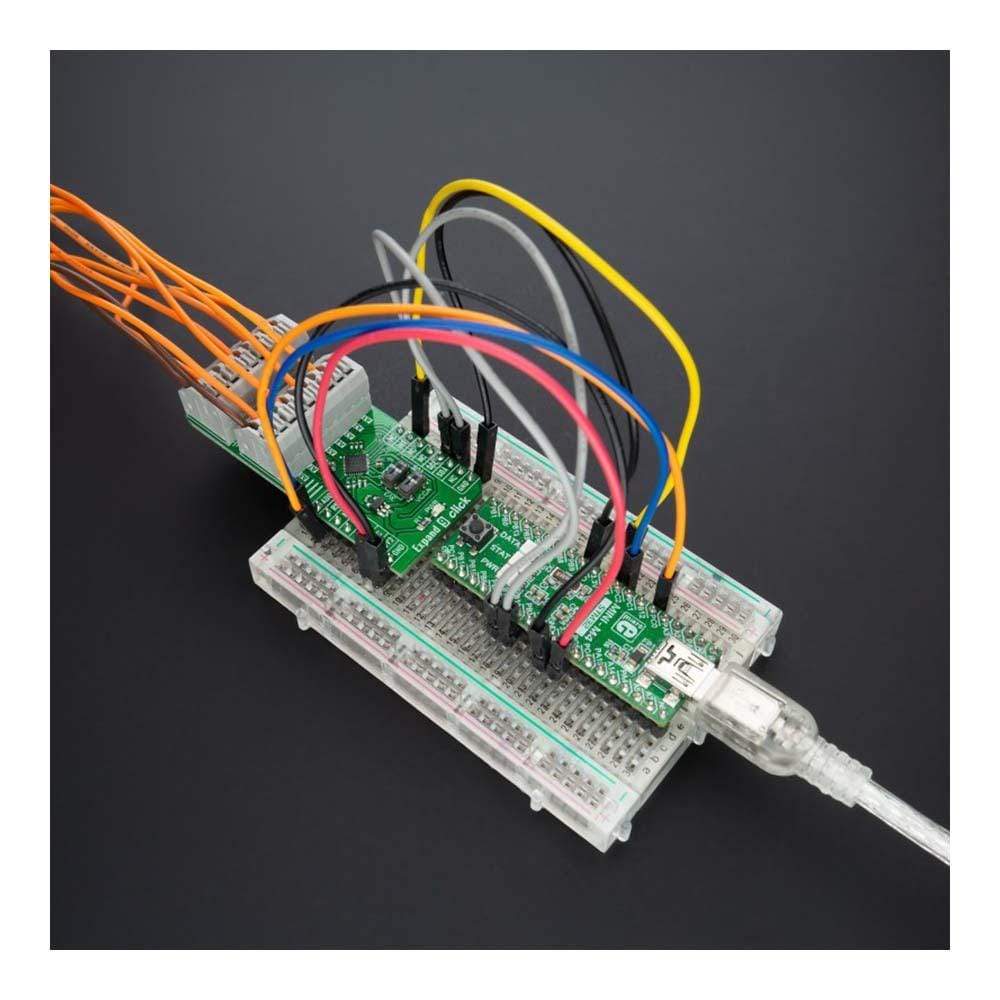
Key Features
Overview
The Expand 9 Click Board™ is a compact add-on board that contains a multi-port I/O expander. This board features the SX1509QB, the world’s lowest voltage level shifting GPIO expander from Semtech Corporation. The SX1509QB comes in a 16-channel configuration and allows easy serial expansion of I/O through a standard I2C serial interface. It also has a built-in level shifting feature making it highly flexible in power supply systems where communication between incompatible I/O voltages is required, an integrated LED driver for enhanced lighting, and a keypad scanning engine to implement keypad applications up to 8x8 matrix.
The Expand 9 Click Board™ provides a simple solution when additional I/Os are needed, suitable for low-power portable equipment, keypad scanning, driving LEDs, and many more.
Downloads
Le Développez 9 Click Board™ est une carte complémentaire compacte qui contient un extenseur d'E/S multiport. Cette carte comprend le SX1509QB, l'extenseur GPIO à décalage de niveau de tension le plus bas au monde de Semtech Corporation. Le SX1509QB est disponible dans une configuration à 16 canaux et permet une extension série facile des E/S via une interface série I2C standard. Il dispose également d'une fonction de décalage de niveau intégrée qui le rend très flexible dans les systèmes d'alimentation où la communication entre des tensions d'E/S incompatibles est requise, d'un pilote LED intégré pour un éclairage amélioré et d'un moteur de numérisation de clavier pour mettre en œuvre des applications de clavier jusqu'à une matrice 8x8.
Le tableau à clic Expand 9™ fournit une solution simple lorsque des E/S supplémentaires sont nécessaires, adaptée aux équipements portables à faible consommation, à la numérisation du clavier, au pilotage de LED et bien d'autres.
| General Information | |
|---|---|
Part Number (SKU) |
MIKROE-4853
|
Manufacturer |
|
| Physical and Mechanical | |
Weight |
0.02 kg
|
| Other | |
Country of Origin |
|
HS Code Customs Tariff code
|
|
EAN |
8606027384097
|
Warranty |
|
Frequently Asked Questions
Have a Question?
Be the first to ask a question about this.

